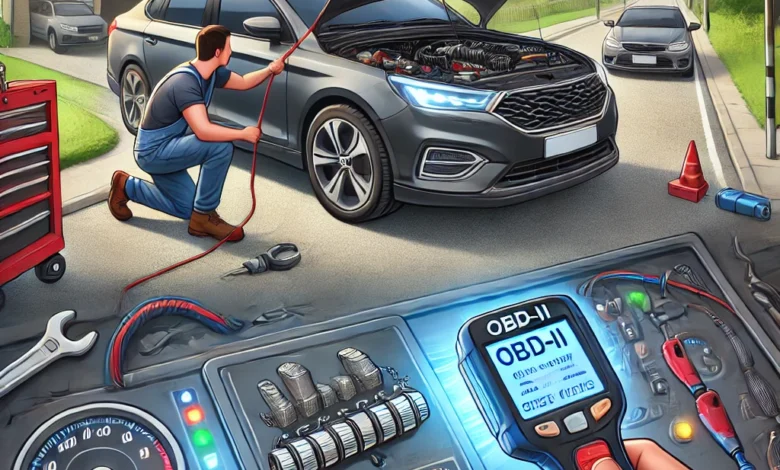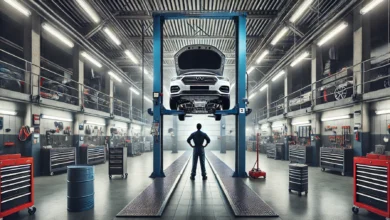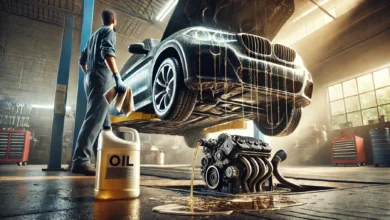What To Do After Replacing Camshaft Sensor? A Detailed Guide

Alright, so you’ve just replaced your camshaft sensor. Congrats on tackling this crucial job! But now you’re probably wondering, “What do I do next?” Don’t worry; I’ve got you covered. Let’s dive into what steps you need to take after replacing the camshaft sensor to ensure your car runs smoothly.
What To Do After Replacing Camshaft Sensor
1. Double-Check Your Work
First things first, take a moment to double-check your work. It’s easy to overlook something during the hustle and bustle of car repairs. Here are a few things to confirm:
- Sensor Connection: Ensure the camshaft sensor is securely connected. A loose connection can cause issues down the line.
- Bolts and Screws: Verify that all bolts and screws are tightened correctly. You don’t want anything coming loose while you’re driving.
- Wiring: Inspect the wiring for any signs of wear or damage. Damaged wires can lead to sensor failure.
2. Clear the Engine Codes
After replacing the sensor, your car’s computer might still store old error codes. To avoid confusion, you should clear these codes. Here’s how:
- Use an OBD-II Scanner: Plug in an OBD-II scanner into your car’s diagnostic port. Follow the instructions to clear the codes. If you don’t have a scanner, many auto parts stores offer this service for free.
- Disconnect the Battery: If you don’t have access to a scanner, you can disconnect the negative battery terminal for about 15 minutes. This should reset the computer and clear the codes.
3. Start the Engine
Once the codes are cleared, it’s time to start the engine. Pay close attention to how it runs. Here’s what to look for:
- Smooth Idle: The engine should idle smoothly without any stuttering or hesitation.
- No Warning Lights: Check that the check engine light (CEL) or any other warning lights stay off.
- Normal Operation: Listen for any unusual noises or vibrations. The engine should run as expected.
4. Take a Test Drive
A short test drive can help confirm that everything is working correctly. Here’s what to do during the drive:
- Accelerate and Decelerate: Pay attention to how the engine responds. It should accelerate and decelerate smoothly.
- Monitor Performance: Keep an eye on the dashboard for any warning lights or unusual behavior.
- Listen for Sounds: Listen for any abnormal sounds that might indicate an issue.
5. Monitor Fuel Efficiency
After replacing the camshaft sensor, you might notice an improvement in fuel efficiency. This is because the sensor plays a key role in managing the fuel injection timing. Keep an eye on your fuel consumption over the next few weeks to ensure everything is in order.
6. Check for Leaks
While this might seem unrelated, it’s always a good idea to check for any leaks after working on your engine. Here’s what to look for:
- Oil Leaks: Inspect the area around the camshaft sensor for any signs of oil leakage.
- Coolant Leaks: Check for any coolant leaks that might have occurred during the repair process.
7. Schedule Regular Maintenance
To keep your engine running smoothly, regular maintenance is key. After replacing the camshaft sensor, consider these maintenance tips:
- Oil Changes: Stick to a regular oil change schedule. Clean oil helps the camshaft and other engine components run efficiently.
- Check Engine Light: If the check engine light comes on again, don’t ignore it. It could indicate a different issue or a faulty sensor installation.
- Routine Inspections: Periodically inspect the wiring and connections of the camshaft sensor to ensure they remain in good condition.
8. Consult a Professional if Needed
If you notice any persistent issues or if the engine doesn’t seem to be running right, don’t hesitate to consult a professional mechanic. They can perform a more thorough diagnostic check and address any underlying problems.
Final Thoughts
Replacing a camshaft sensor is a significant task, and doing it correctly can greatly improve your engine’s performance. By following these steps, you can ensure that your car continues to run smoothly after the repair. Remember, attention to detail and regular maintenance are key to keeping your vehicle in top shape.










